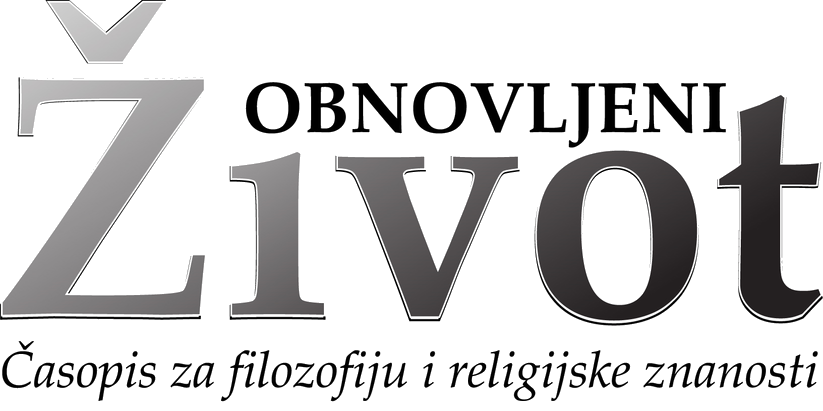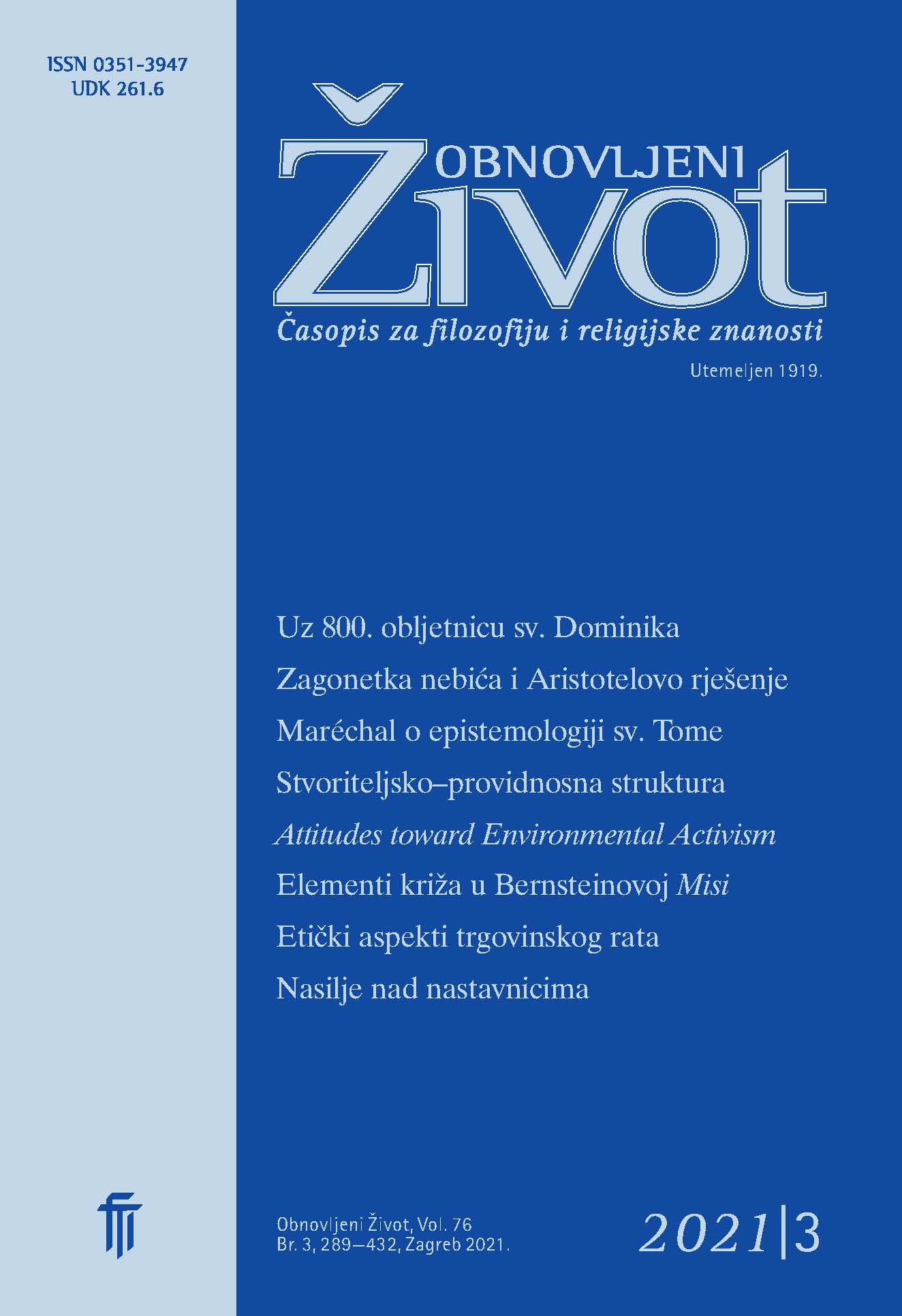Elements of the Cross in Leonard Bernstein’s »Mass«
Abstract
This paper analyses a musical theatre piece by Leonard Bernstein titled, »Mass: A Theatre Piece for Singers, Players, and Dancers«. Aside from an analysis of the dramatic content of the »Mass«, the paper discusses some general aesthetic and artistic criteria, the reasons for contradictory interpretations of the piece, the presence of sacrilegious features, the justification of the presence of elements that ironize some features of religious life, the artistic value of the piece, criteria for evaluating art and the use of elements with shock value. Through various musical styles and a provocative dialogue that goes beyond the framework of Catholic liturgy, »Mass« leads the protagonists to a catharsis in the dramatic unfolding of the action. With the help of cathartic elements, called »elements of the cross«, there develops a compositional about–turn in the direction of nothingness, such that the possibilities of human choice are more clearly delineated. The intent of the work, evident in the synthesis, was to show that Bernstein’s artistic treatment of potentially sacrilegious and ironic elements is justified as artistic expression, i.e., the truth was transcended by means of these features and through artistic expression. By combining atheistic views with artistic persuasiveness, Bernstein pointed to the crisis of faith in the USA in the 1970’s. Despite this crisis, he loses neither hope nor faith in the possibility of purification and a positive change in the individual’s consciousness and that of society.
Downloads
Published
Issue
Section
License
Jednom prihvaćeni članak obvezuje autora da ga ne smije objaviti drugdje bez dozvole uredništva, a i tada samo uz bilješku da je objavljen prvi put u Obnovljenom životu. Uredništvo će obavijestiti autora o prihvaćanju ili neprihvaćanju članka za objavljivanje.
Članci objavljeni u časopisu se, uz prikladno navođenje izvora, smiju besplatno koristiti u obrazovne i druge nekomercijalne svrhe.


